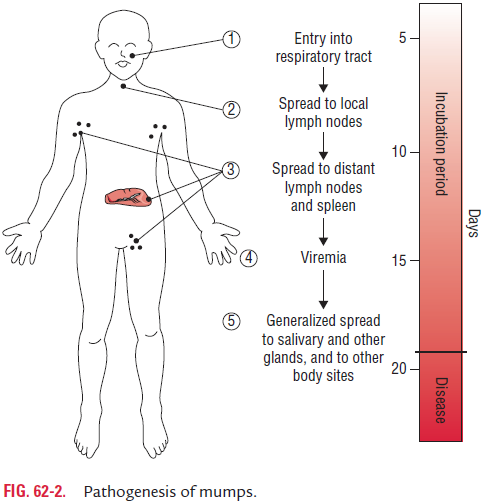Chapter: Microbiology and Immunology: Virology, Virus: Paramyxoviruses
Pathogenesis and Immunity - Mumps Virus
Pathogenesis and Immunity
◗ Pathogenesis of mumps
Infection by mumps virus begins after the entry of the virus into the respiratory tract. The virus then replicates locally and disseminates by blood circulation to target tissues, such as the CNS and salivary glands, particularly the parotid glands. The virus causes infection of the parotid gland either through Stensen’s duct or by viremia. Salivary glands, such as parotid glands, show desquamation of necrotic epithelial cells lining the ducts.
The virus replicates in these target tissues and then causes a secondary phase of viremia. The virus is spread by viremia throughout the body to kidneys, testes, ovary, pancreas, and other organs. Infection of the CNS, especially meninges, causes meningitis, or meningoencephalitis (Fig. 62-2).

◗ Host immunity
Humoral immunity is characterized by the appearance of anti-body against the soluble S antigen and hemagglutinating anti-bodies. The antibody against S antigen is the first to appear, within 3–7 days after the onset of symptoms. The hemagglu-tinating antibodies directed against hemagglutinin confer lifelong immunity against mumps virus. CMI is essential for control of infection. This also contributes to pathogenesis of the disease and is responsible partially for the symptoms observed during the course of clinical illness. Immunity in mumps is lifelong.
Related Topics